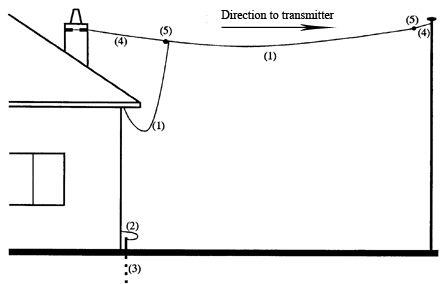AM Reception Tips
Planned transmitter maintenance
If you have previously been able to listen but are currently experiencing problems, check our Scheduled Transmission Outages page which lists planned transmitter maintenance work.
Are you close enough to a transmitter?
The further you are from a transmitter, the weaker the AM signal will be. Signals can travel long distances, but obstructions such as hills or tall buildings will cause the signal to lose strength more quickly.
Other reception issues
You may find that the signal is not as good at night. This is due to differences in the atmosphere.
Electrical interference from sources such as electric fences, televisions, computers or street lights can cause crackling. Try switching off other appliances in your house to see whether the signal improves.
Aerials
Most AM reception problems can be improved by using an aerial.
AM aerials are directional, so to get the best reception, try changing its position. Most portable radios have a built-in AM aerial, so you may need to change the position of the radio to find the best direction.
Handheld devices may use the wire of the headphones as the aerial, so make sure that the wire is fully extended.
In areas of poor reception, you may need to connect your radio to an outside aerial. An outside aerial can be very useful when the reception of distant stations is required, especially in rural areas.
Other Aerial Options
Frame Aerial
The reception of AM broadcasts on portable transistor radios may be improved by the use of a tuned loop aerial. The aerial consists of two parts:
- A number of turns of insulated wire wound around a non- metallic former to make an inductor or coil.
- A variable capacitor connected across the inductor to tune the aerial.
The value of the tuning capacitor is 350 picofarad (350pf). It is the type that would he used in a crystal set and may be purchased at most shops selling radio components. The number of turns of wire and the diameter of the inductor as shown are matched to this value of capacitor. The loop aerial is very directional. It should be mounted vertically with the edge of the loop pointed towards the station to be received. The transistor radio is placed inside or beside the loop aerial at a right angle to the loop.
Parts for diagram below
- Fifteen turns of single strand bell wire (fine insulated wire) totalling approx. 20 meters.
- Timber frame with outside measurements on three sides of 380mm and underside 130mm.
- Position of transistor radio.
- Base Board.
- 350 pf capacitor
- Wire connected to fixed plate connection on capacitor.
- Wire connected to moving plate connection on capacitor.
Frame aerial diagram

Tune the radio to the desired station and move the radio around and about the loop aerial to obtain the best results.
Outdoor Aerials
Radio receivers are sensitive to radio waves present all around us. Putting up an aerial of any sort helps collect these waves and feeds them into a coil in your radio receiver.
Depending on the type of radio receiver you have, the earth connection is important too.
The aerial terminal on your receiver is connected to one end of the coil and the earth terminal to the other. As radio signals always want to travel to earth as easily as possible, if you connect the earth terminal to earth, it helps to 'pull down' the signals through the coil. The more signal through the coil, the better your reception and listening pleasure.
Some AM receivers are provided with terminals, which allow an outside aerial to be connected to the receiver. An outside aerial can he very useful when the reception of distant stations is required, especially in rural areas. Two types of outdoor aerial suitable for AM reception are the 'Inverted L' and the 'Whip'.
Inverted L Aerial

- Aerial wire and lead-in in one continuous length (connects to receiver aerial terminal).
- Earth wire clamped onto earth stake (wire connects to receiver earth terminal).
- Earth stake (ensures stake is not driven into water/gas pipe or power cables).
- Wire suspensions.
- Insulators.
Position the aerial wire (1) so that it is in line with the direction to the transmitter. Also, the end of the wire which is furthest from the house should be closest to the transmitter.
Whip Aerial

- Metal rod aerial mounted on insulating support.
- Down-lead (connects to receiver aerial terminal).
- Insulator supporting down-lead clear of gutter.
- Earth wire clamped onto earth stake (wire connects to receiver earth terminal).
- Earth stake (ensure stake is not driven. into water/gas pipe or power cables).
